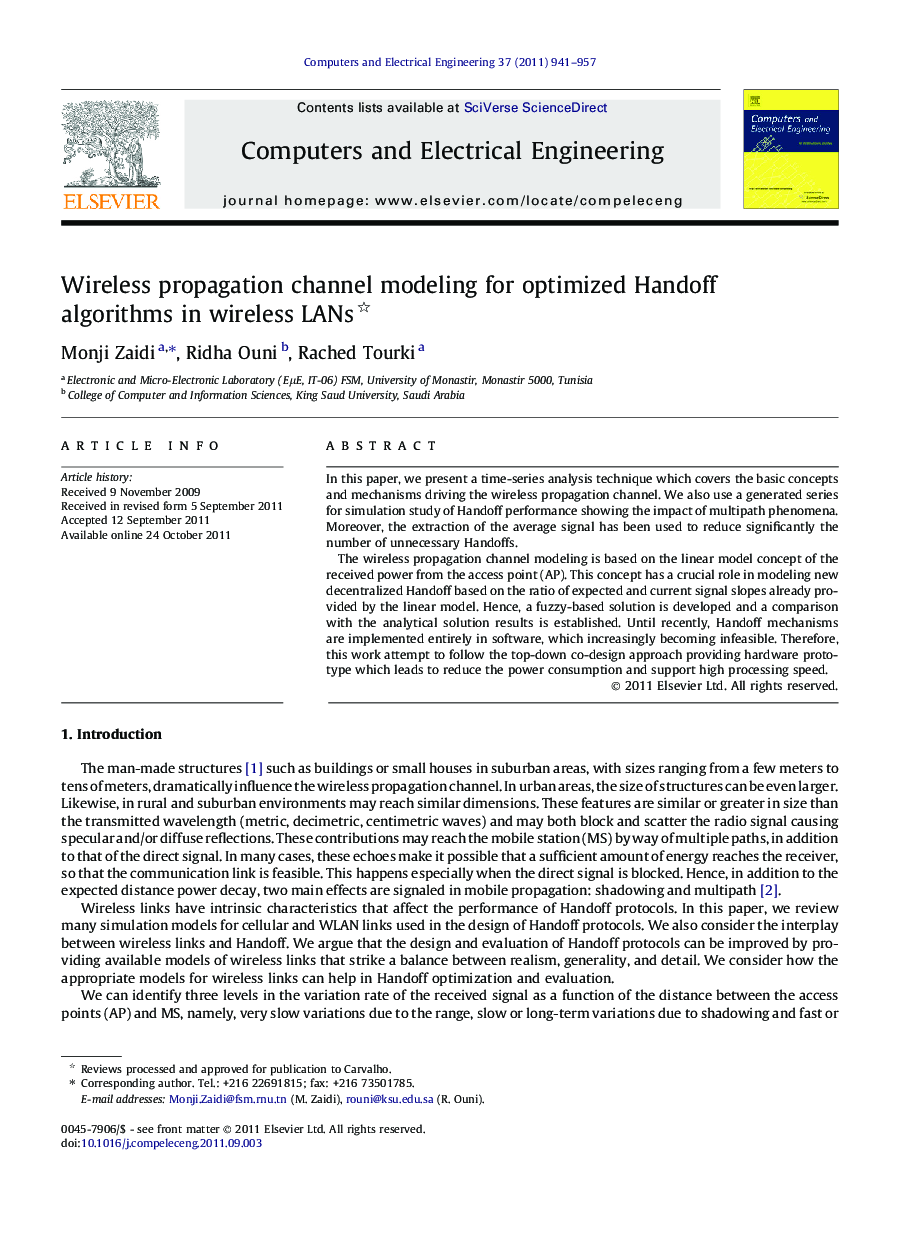| کد مقاله | کد نشریه | سال انتشار | مقاله انگلیسی | نسخه تمام متن |
|---|---|---|---|---|
| 454095 | 695098 | 2011 | 17 صفحه PDF | دانلود رایگان |

In this paper, we present a time-series analysis technique which covers the basic concepts and mechanisms driving the wireless propagation channel. We also use a generated series for simulation study of Handoff performance showing the impact of multipath phenomena. Moreover, the extraction of the average signal has been used to reduce significantly the number of unnecessary Handoffs.The wireless propagation channel modeling is based on the linear model concept of the received power from the access point (AP). This concept has a crucial role in modeling new decentralized Handoff based on the ratio of expected and current signal slopes already provided by the linear model. Hence, a fuzzy-based solution is developed and a comparison with the analytical solution results is established. Until recently, Handoff mechanisms are implemented entirely in software, which increasingly becoming infeasible. Therefore, this work attempt to follow the top-down co-design approach providing hardware prototype which leads to reduce the power consumption and support high processing speed.
Figure optionsDownload as PowerPoint slideHighlights
► The wireless propagation channel modeling is based on the linear model concept of the received power.
► Extracting the received signal average reduces significantly the number of unnecessary Handoffs.
► The hardware implementation allows reducing the Handoff latency, the cost and the power consumption.
► The linear regression process allows to effectively perform the decentralized Handoff when turning a corner.
Journal: Computers & Electrical Engineering - Volume 37, Issue 6, November 2011, Pages 941–957